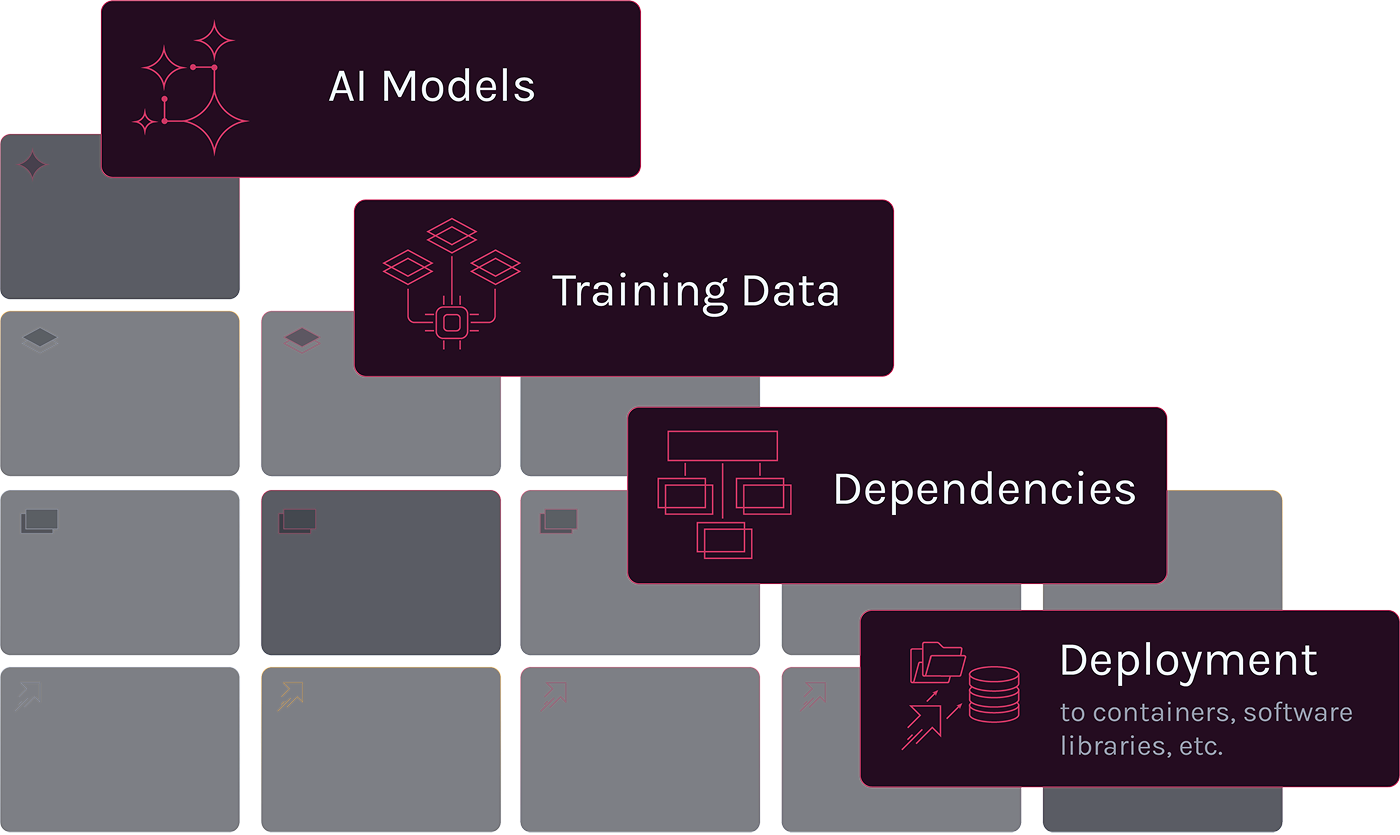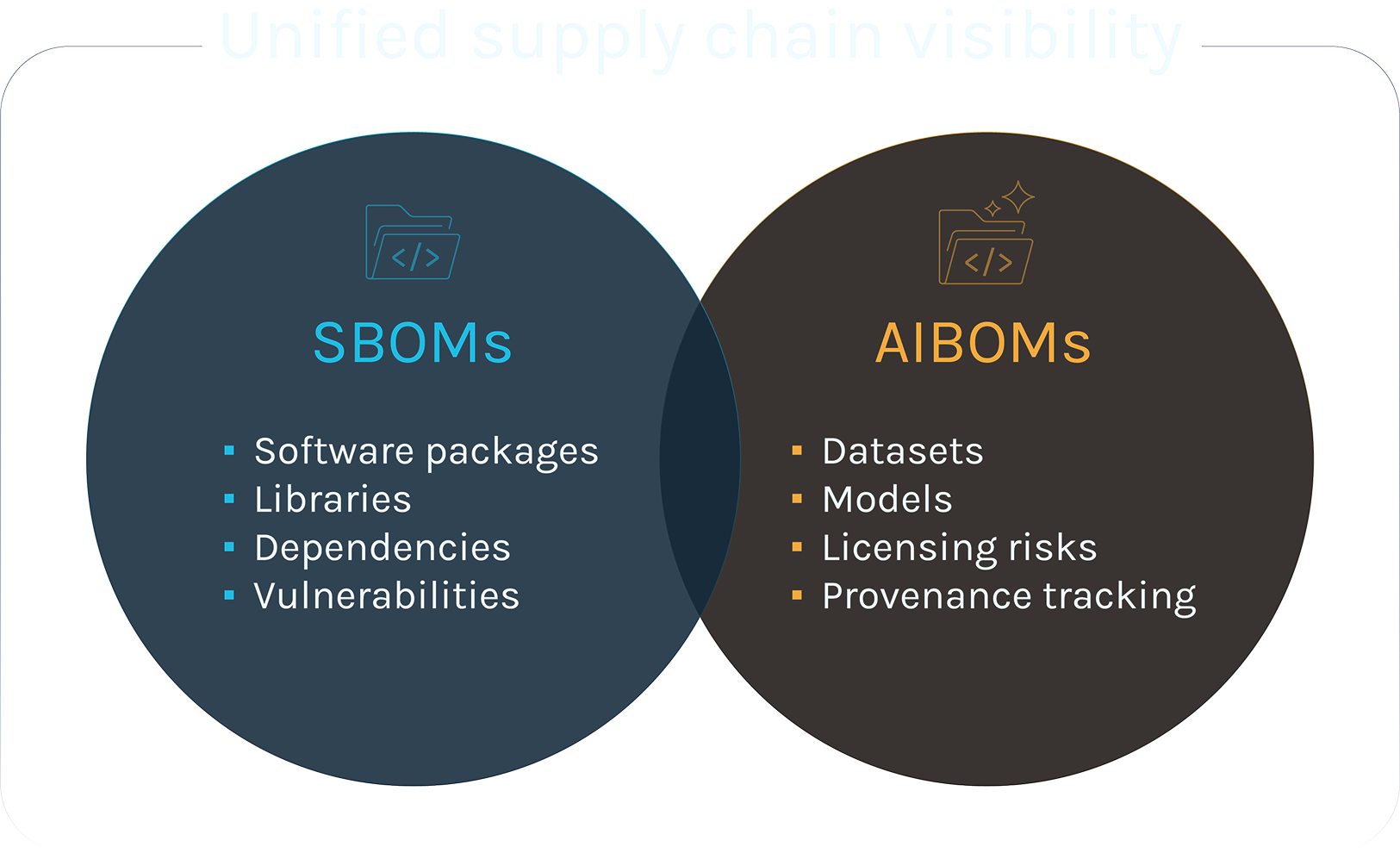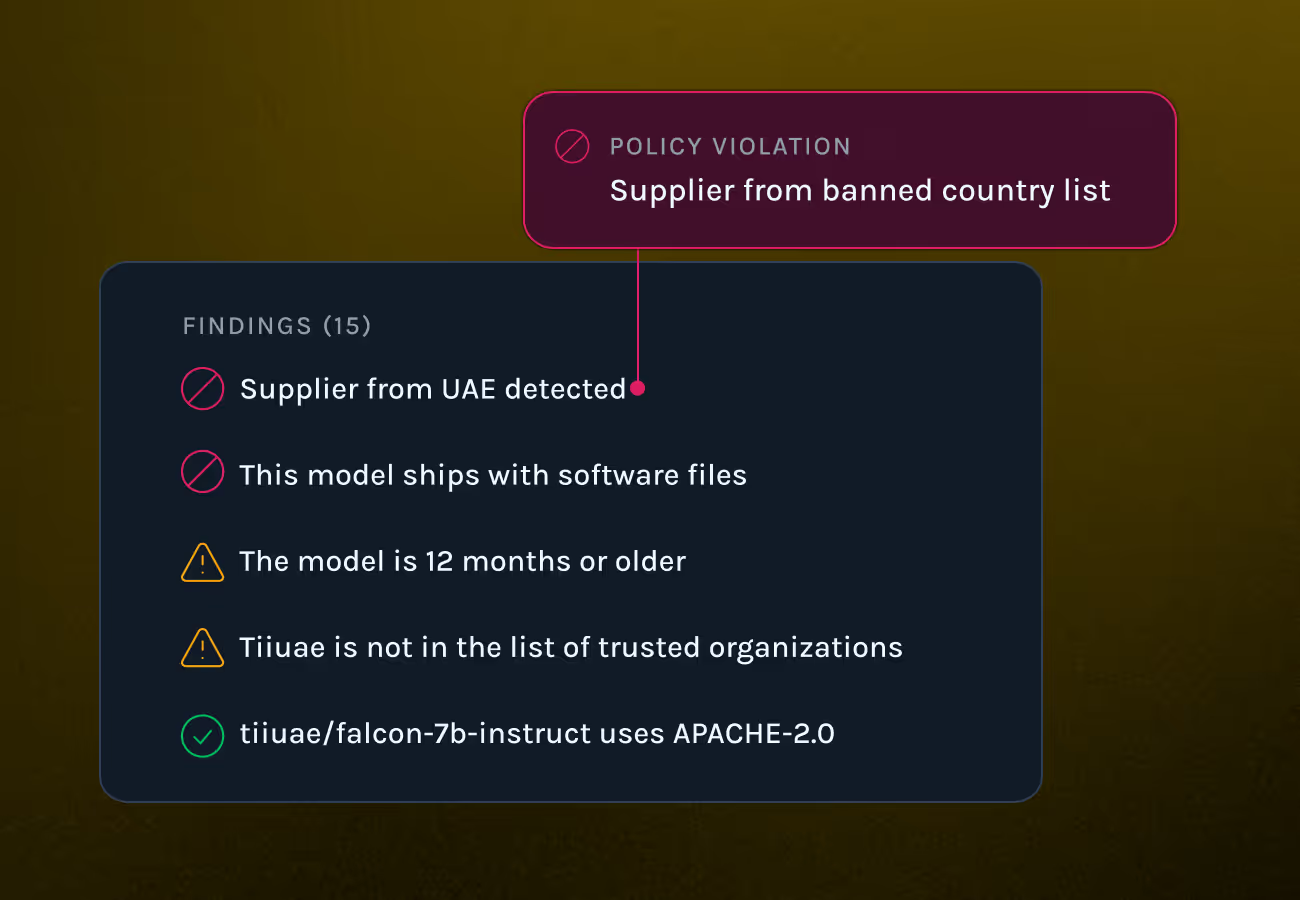The First Step of Securing AI is the Inventory
An AI Bill of Materials (AIBOM) is a structured inventory that documents all the components within an AI system.
- Datasets used to train or fine-tune models.
- Models themselves, including open-source or proprietary.
- Software dependencies that support AI pipelines.
- Deployment environments where models run.

Why AIBOMs Matter
AI introduces powerful opportunities and complex risks. Without visibility, organizations cannot confidently manage compliance, security, or trust. An AIBOM helps organizations:
Demonstrate adherence to evolving frameworks like the EU AI Act, NIST AI RMF, and DoD AI security directives.
Detect risky datasets, licenses, and vulnerable software dependencies.
Provide regulators, partners, and customers with proof of responsible AI practices.
Respond quickly to audits, incidents, or questions about your AI supply chain.
AIBOMs and SBOMs: Building a Complete Supply Chain Picture
Securing modern AI systems requires visibility across both software and AI-specific components. Organizations should leverage AIBOMs and SBOMs together to gain a complete view of their technology supply chains:

- SBOMs map the software packages, libraries, and dependencies that underpin applications and AI pipelines.
- AIBOMs extend this visibility to cover datasets, models, and AI-specific risks that traditional SBOMs cannot capture on their own.
- Together, they provide a unified approach to supply chain security, ensuring organizations can identify vulnerabilities, validate provenance, and demonstrate compliance across both software and AI systems.
From Theory to Practice: Manifest’s Approach
At Manifest, we believe an AIBOM is not just a document, it’s a living operational artifact. We help organizations make AIBOMs actionable through a continuous, integrated approach. This practical path turns AIBOMs from a static inventory into a dynamic governance capability.
- Discover AI assets across the enterprise, including shadow AI.
- Document datasets, models, and dependencies in a structured format.
- Integrate AIBOM insights into compliance, security, and vendor risk workflows.
- Monitor continuously as AI systems evolve, ensuring audit readiness and resilience.

FAQs
A Software Bill of Materials (SBOM) is a detailed inventory of every component inside your software, including open-source libraries, dependencies, and third-party code. It helps you identify hidden vulnerabilities, manage licensing risk, and comply with regulations like EO 14028 and NIST 800-218.
Manifest automates SBOM generation across your entire application fleet, in seconds. We support formats like SPDX, CycloneDX, and VEX, and go beyond repositories to analyze binaries, embedded code, and real-world deployments.
Traditional Software Composition Analysis (SCA) tools scan individual repos and often generate noisy alerts. Manifest offers universal technology transparency, assessing risk across your entire product line, including non-CVE threats, committer insights, and AI models.
SBOMs should be generated continuously, not just when a product is released. Manifest supports real-time SBOM monitoring, enrichment, and vulnerability tracking so your inventory stays accurate, actionable, and audit-ready.